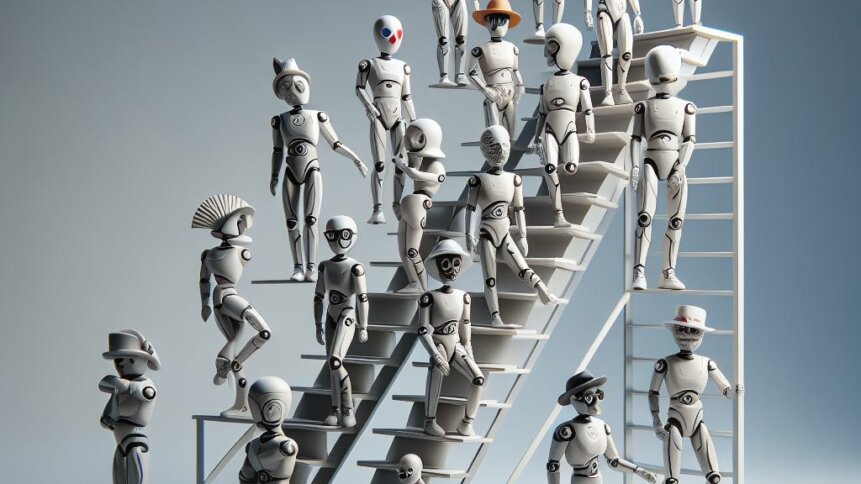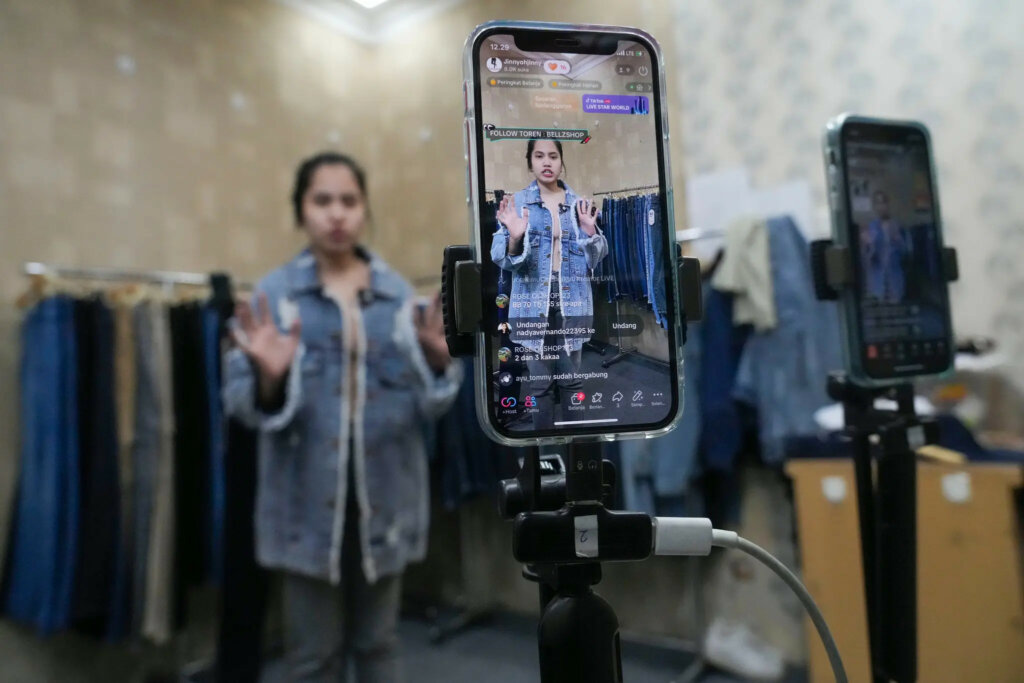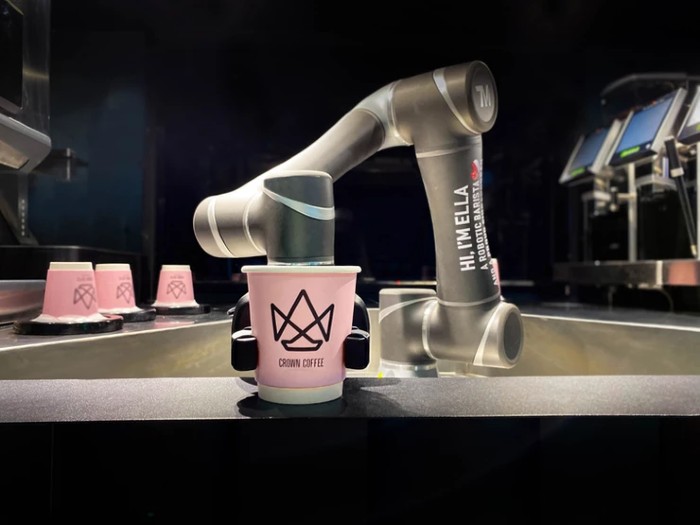A Band-Aid for inequality

• Women in tech are both helped and hindered by generative AI.
• From a position of inequality though, making everything faster and easier can’t help long-term.
• There’s a data that women’s roles in tech could be among the first to be “machined” out of existence.
How has the rise of generative AI impacted women in tech? If that’s not a question you’ve considered, we’d be willing to bet that the predominantly male minds behind its rise haven’t either, so don’t feel too bad.
At the end of last week, the GeekWire podcast heard from Nancy Wang, venture partner at Felicis Ventures and founder of Advancing Women in Tech. With a background as former AWS general manager and Google lead product manager, Wang spoke to Todd Bishop on a range of topics, and we recommend listening to the full episode.
What we were particularly interested in was how Wang sees generative AI in relation to women in tech.

Nancy Wang, founder of Advancing Women in Tech.
She recalls a recent partnership between Advancing Women in Tech and the US State Department that was set up to train 75 women entrepreneurs from nine countries across southeast and east Asia.
“What was really compelling to see was how those women who did not come from engineering backgrounds… were able to create storefronts using generative AI, they were able to create e-commerce websites for their home goods using generative AI.”
“It lowers the barrier to entry for people, especially underrepresented groups… to be able to create their own livelihood and be entrepreneurs.”
For these women who aren’t afforded the same opportunities as western women to train as engineers, be it as a result of the education system or financial issues, the argument is that generative AI will enable them to develop as someone with training could.
This is an effective solution; it’s also faster, making the realization of an idea more attainable and doable without the freedom of years to dedicate to it. So, to some extent, the idea of AI as something that can unlock opportunities is viable.
READ NEXT

Women in Tech: barriers to inclusion
However, the suggestion that it’s a great leveller, making access for an east Asian woman as easy as it is for a western man, or even a western woman, is where issues arise.
AI isn’t an equalizer
On the fear that AI and the technologies it will go on to power might take the place of human job roles, Wang says the solution is that we, the human workforce, get smarter. If a designer can use AI to create templates that get from zero to one much faster, then the process from one to 100 output has to be that much better, too.
That applies to developers too: if you can leverage ChatGPT to get to a basic framework then the end output should be much faster and better – the bar for everyone has just risen.
If that’s the case, though, then how are women in tech expected to catch up? The playing field was never level, and AI has been applied as a Band-Aid to an open wound; one size doesn’t fit all and will only stick in some areas. Were AI only given to women and underrepresented groups, then maybe, but for those who were already behind, accelerating everyone’s progress won’t help them catch up. In essence, if everyone has to work harder and faster, the likelihood is that the process will become more exhausting, faster, for those who are already underrepresented and face specific difficulties due to social expectations and pressures.
Furthermore, has digital transformation in the west not been recorded as a negative force on less developed countries? Even if we focus only on generative AI, the conditions of work outsourced from the west intent on improving the technology is well documented to be less than humane.
And what about e-commerce in relation to the home goods that AI-generated storefronts will help sell? You only have to look to the TikTok Shop drama in Indonesia to see how tech giants always seem to come out on top, no matter how much effort goes into ensuring that domestic sellers get a fair deal.

Image from the New York Times.
There were sellers in Indonesia that felt banning TikTok Shop would be to the detriment of their businesses. An outright ban might be just as damaging as over-investment.
This isn’t all to say that the efforts of Advancing Women in Tech are futile, or that the use of AI won’t benefit women in tech whatsoever. However, there’s a danger that, caught up in the hype and futurism of this new technology, those with the power to make actual change to the circumstances of women in tech will keep getting away with passivism.
Something else that Wang touches on is the fact that women are often expected to carry out secondary labor that prevents them from grasping opportunities in the tech world. Working women don’t have as much access to networking opportunities.
Wang is transparent about the critical fact that in the tech industry, advancement can come down to who you know. One thing that the pandemic did was normalize video meetings and other online networking opportunities, which might be more accessible to women who have no choice but to be at home with their kids.
READ NEXT

Women in tech: the fintech mindset
In this way, the internet and AI as an extension of it, do have material benefits for women trying to achieve equal standing with men in the industry.
Are women in tech being replaced by AI?
Speaking of secondary labor, though – that is labor that doesn’t fit industry definitions of productivity, like cooking, childcare, and housework – often when AI’s uses are listed, the ‘safe’ jobs for it to take over can be categorized as secondary.
AI-friendly jobs so often end up being what a decade or two ago were considered female-friendly roles. In fact, talking about the impact of AI on journalism, the podcast host Todd Bishop suggested that instead of letting it take on the whole sector, writers might use it as “the assistant they could never afford.”
In fact, if you really look, there’s a pretty huge crossover between the perceived role of AI and that of women in tech – that is to say, the view of women in tech that keeps them out of the highest seats.
At the start of a board meeting, the stereotype would be that a young (probably much younger than the highly important men in the room!) woman would take a coffee order, slipping back in quietly to distribute the drinks.
Luckily, the AI-enabled robot barista that would replace her is called ELLA. Or at least, one of the earliest prototypes – Singapore’s first fully autonomous robotic barista set for mass-production in 2002 – was.

She even politely introduces herself!
Gestures have been made at the feminization of home assistants like Alexa and Siri (although, yes, you can choose a male voice to respond to your every whim), and while the AI market is dominated by male-run companies, the continuation of that pattern is set in stone.
That’s why work by women like Wang is so important. Women will never be at the top if they can’t enter the tech industry on an equal footing with men but, even if it helps, generative AI can’t be the focal point in finding a solution.
If we aren’t careful, the reasons why AI has the biases it does, why it harms the same people that are already underrepresented in tech, will be forgotten in the face of its potential as a great equalizer – a potential that, it should go without saying, it will never realize.







